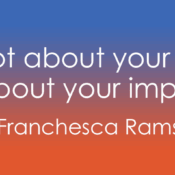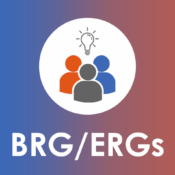
Interpreter Matchmaking: Why the Right Fit Matters More Than You Think
Every Deaf or hard of hearing professional I know has at least one story about an interpreter that made their work experience more challenging than it needed to be.
Grab your coffee! Following are several examples of egregious experiences Deaf professionals have encountered with interpreters:
- A performance review where the interpreter's tone made constructive feedback sound sarcastic.
- A university academic conference where a K-12 educational interpreter was secured.
- A team meeting where the interpreter made spoken, not translated comments to hearing colleagues about the Deaf professional.
- An interview where the interpreter introduced themselves louder than the candidate.
(Yes, really.)
These stories aren't just minor inconveniences; they can significantly impact a professional's career and communication effectiveness.
The truth is, not all interpreters are equipped for all situations. Yet, across industries and institutions, interpreter assignments are too often treated as one-size-fits-all.
The consequences? Miscommunication, damaged trust, and missed opportunities.
Interpreter Matchmaking: It’s More Than Scheduling
Interpreter matchmaking isn’t just about availability. It’s about best-fit.
Think about your family doctor, or Primary Care Provider (PCP). They are generally an excellent starting point for your healthcare needs. They're equipped to handle common medical conditions and can guide you toward specialized care when necessary. For instance, you wouldn't expect your PCP to lead a cardiology surgery consultation; that expertise lies with a heart surgeon.
Along these lines, why are Deaf professionals routinely assigned interpreters who lack context, experience, or industry-specific vocabulary?
Effective interpreter matchmaking involves:
- Meeting communication preferences. Selecting interpreters and accessibility methods that align with the end user's preferred language and communication style—whether that’s through sign language interpretation or a mix of services that include real-time captioning (CART).
- Understanding context. Choosing interpreters with industry experience in the specific setting is critical to ensure accuracy and appropriateness across a variety of settings - whether legal, medical, corporate, creative, or otherwise.
- Respecting professionalism. Ensuring the interpreter is in alignment with organizational nuances and culture, as well as expected dress codes.
- Elevating lived experience: Prioritizing interpreters who understand or share similar lived experiences, particularly in settings where identity, power, or marginalization may affect the interaction.
This is where the real shift needs to happen: interpreters are not neutral placeholders, but rather active participants in facilitating communication. The right match can make or break an interaction.
Interpreters Deserve Support Too
Let’s be clear: interpreters also require support. When interpreters are thrown into unfamiliar environments with no prep, no resources, and no context — everyone suffers.
That’s why, at 2axend, we’re investing in interpreter development through our action-packed virtual Interpreting for Deaf Professionals Summit. Sessions will include interactive presentations to panel discussions and are designed to help interpreters optimize the delivery of interpreting services to Deaf, hard of hearing, and DeafBlind professionals.
This September 19–21, we’re going beyond the basics to explore what it really means to work in partnership with interpreting clients in:
- Navigating professionalism in unfamiliar industries
- Supporting real-time Deaf advocacy
- Understanding power dynamics in corporate, academic, and healthcare settings
- Honoring cultural and linguistic preferences with precision and respect
Because interpreting well requires far more than language fluency — it requires situational awareness, industry knowledge, and Deaf-informed guidance.
Nothing About Us Without Us
To effectively facilitate communication, it’s imperative that Deaf, DeafBlind, and hard of hearing professionals are included in interpreter coordination decisions from the get go. However, more often than not, interpreter requests are made by those who are not the end user of the services. In an ideal world, Deaf professionals should be in charge of owning the interpreter requests to ensure they fully address their communication needs.
However, oftentimes, there is a need to navigate organizational bureaucracy, which means the power is often left in the hands of managers or HR leaders. With that said, if you are not the end-user of the services and are managing accommodations, including the end user from the very beginning is imperative and should include:
- Asking us what works best — not assuming
- Prioritizing relationships and continuity
- Building a roster of interpreters with varied industry expertise
- Listening when we say a match isn’t working
Interpreter coordination should never happen in a vacuum. And yet, too often, interpreters are secured without any Deaf, DeafBlind, or hard of hearing input at all. The impact? We’re left doing the emotional labor of fixing misalignments during the moment instead of focusing on what we came to do.
Want to Get It Right? Start Here:
If you're responsible for hiring or coordinating interpreters, here’s what we recommend:
- Send your interpreters to the 2025 Interpreting for Deaf Professionals Summit. Employees and contractors are welcome!
- Consult the person requesting access — before scheduling: Always ask the Deaf person what they need before booking an interpreter.
- Ask about preferences: Find out if they prefer a Deaf interpreter or someone with experience in a specific field.
- Provide prep materials: Share agendas, slide decks, or context in advance to support interpreter accuracy.
- Check-in after: Ask the end user if the interpreter was a good fit and why.
- Build relationships with a roster of interpreters equipped across domains: Maintain a diverse, reliable network of interpreters with expertise in different settings.
Interpreter matchmaking isn’t extra — it’s essential.
When we prioritize the right match, we reduce friction, build trust, and ultimately improve access for everyone involved. That’s how we move from “compliance” to true communication equity.
Because Deaf professionals aren’t just asking to be heard — we’re asking to be understood.
Let’s get the match right.



